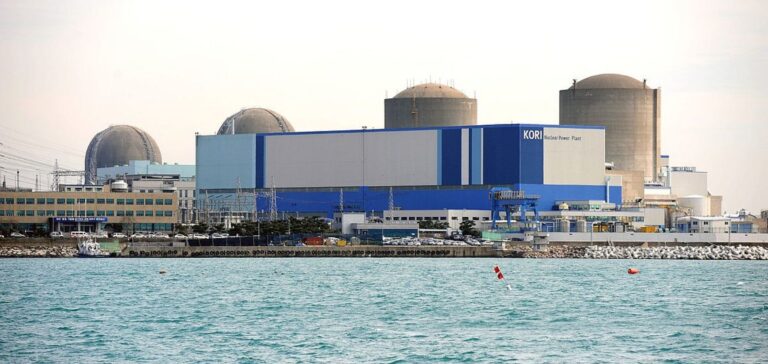A cooperation agreement has been signed between NuScale Power and GS Energy to study the feasibility of building a NuScale VOYGR-6 SMR plant in the National Nuclear Hydrogen Industrial Complex in South Korea. This partnership will also include the supply of electricity and heat to the complex as well as the participation of partner companies.
According to The Korea Economic Daily, Uljin County plans to build an SMR plant with six NuScale SMR modules. Construction of the SMR plant is expected to begin in 2028, after an estimated five years to obtain approval from the Korean government. It should be completed by 2030, when the industrial park is scheduled to open. Once the SMR plant is completed, GS Energy will operate it.
Promoting hydrogen
The 400 billion won ($300 million) Uljin National Nuclear Hydrogen Industrial Complex began construction in 2022 as part of South Korea’s efforts to promote hydrogen as a future energy source and achieve carbon neutrality by 2050. The Korean government also plans to build national industrial complexes in 14 regions across the country to foster high-tech industries such as semiconductors, future mobility and robots, in addition to the largest semiconductor cluster planned for the Seoul metropolitan area.
VOYGR plants
In June 2021, NuScale Power announced the finalization of an investment agreement with GS Energy North America Investments, the U.S. entity of GS Energy in South Korea. As part of this long-term strategic relationship, GS Energy has made a financial investment in NuScale and will support the deployment of its plants. Both parties also plan to develop service delivery opportunities for NuScale plants regionally. In April 2022, NuScale signed a cooperation agreement with its South Korean partners, Samsung C&T Corporation, Doosan Enerbility and GS Energy, to explore the deployment of NuScale’s VOYGR plants. The agreement builds on a series of investments made by the three companies since 2019 and again in June and July 2021.
As part of the agreement, the companies will jointly study and develop the deployment of VOYGR plants in specific mutually agreed upon locations. The NuScale Power module on which the VOYGR nuclear power plants are based is a pressurized water reactor with all the necessary steam generation and heat exchange components integrated into a single 77 MWe unit. This is the first SMR design to receive approval from the U.S. Nuclear Regulatory Commission. The company offers a 12-module VOYGR-12 power plant capable of producing 924 MWe, as well as 4-module VOYGR-4 (308 MWe) and 6-module VOYGR-6 (462 MWe) plants, and other configurations based on customer needs. A 6-module power plant is to be built near Idaho Falls in the United States as part of the Carbon Free Power project led by Utah Associated Municipal Power Systems, scheduled to be operational by 2030.






















